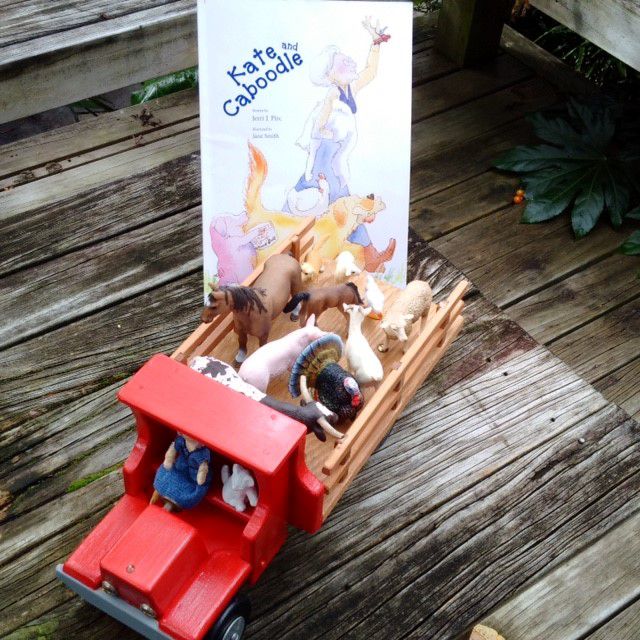Using Props as Part of Story Time: A Christmas gift idea
- 26 November 2018
- Jerri Pirc

Props and Story Time
Need an idea for a Christmas gift for a child? Story props may be just the idea for you. Read on.
Early Educators and speech and language therapists (SLTs) both know the benefits of using story props for children with special needs. As with all good inclusive practice you soon realize that good practice is always just that; good practice for all. Read on to learn more about what props are, what they can do, and how you can enhance your story time with children.
What’s a prop?
Anything tangible that can become part of the story. Ideally, easy to hold, not fragile, no small parts, and most importantly enticing.
Where do I find props?
Usually, a combination of sources is viable. For my first book, I bought the animals, made the Kate doll, and had a dear clever friend, make Kate’s truck. Second-hand stores were the primary source for my second book.
You may very well have your own props already; you just need to collect them in one space. Making a bag to hold your props and book in one place is a great addition to your child’s library. Many of the facilities I visit use prop bags. Even at schools teachers understand that play and hands-on is still an important part of learning for older children.
What do props do?
-
Simply, make a story more fun. Children light up when they see my bag of props and it generates a lot of questions before I even get started.
-
Increase attention spans. By giving a child a prop to hold they will often stay focused and participate more successfully while they wait for their turn in the story.
-
Enable the adult to adapt the activity for children with varying abilities. For children who are non-verbal, being able to participate with the action or contribution of their prop can be a huge step. E.G. A child putting an animal in the truck allows for a non-verbal child to be successful because no verbal skills are required.
-
Help the professional assess language levels for a child who may have limited expressive communication, but have good comprehension. Frequently the way a child engages with the adult and the props can help the professionals see just how much the child is taking in from a book.
-
Encourage turn-taking.
-
Help with the retelling. Not sure how much the child remembers about the story or the sequence? With some verbal prompts.
Example of how I use props with Kate and Caboodle

-
My props include a truck, a small doll to represent Kate, and small plastic animals that all fit inside the truck. Most of my animals are from Schleich toys. I choose that brand as they are sturdy toys with good detail. In addition, many preschools and schools have these toys and children are already familiar with them.
-
I begin reading the story and soon introduce the first prop, the truck. Everyone that is interested can, of course, do a bit of touching and driving.
-
As the story unfolds I hand out the animals for children to hold.
-
At the end the truck is unloaded, allowing for an opportunity to practice answering questions. E.G. “The animals need help getting out. Who can help the cat get out of the truck.”
-
Retell the story with children holding the animals and adding them to the truck as you read.
To find a vendor for Schleich toys go to Schleich.com
Be one of the first five people to comment on this blog and receive a free label to tag your Kate and Caboodle story prop bag.
Also, consider buying one or both of the Kate and Caboodle books for a Christmas present. it’s never too early to start your child’s library; or your grandchild’s library at Granddad and Nana’s house.
Share this post
Leave a comment


